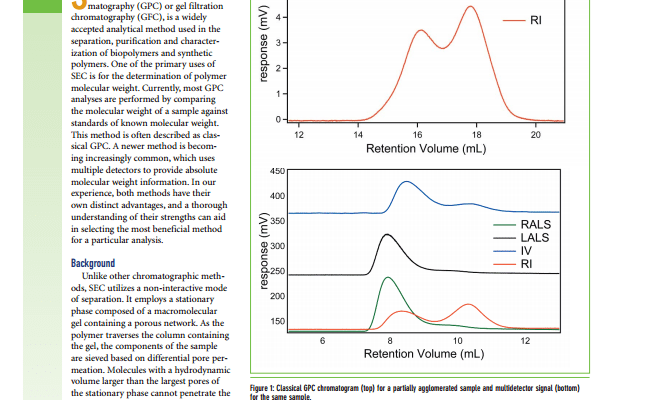OBJECTIVE
The purpose of this work was to compare the molecular weight values generated using standardized GPC and Tetradetection GPC with Light Scattering.
ANALYTICAL STRATEGY
A NIST 1475a polyethylene certified reference material and a low density polyethylene were tested using standardized GPC versus polystyrene standards and using Tetradetection GPC with light scattering to compare the utility of the two methods.
CONCLUSIONS
Both methods were able to distinguish differences in the molecular weight distributions for two polyethylene samples and to estimate the magnitude of those differences. The absolute values determined by the two methods were found to differ. The weight average molecular weight determined for the NIST reference sample was in line with expectations when determined by Light Scattering (53,070 vs 52,481). In contrast, the value determined by standardized GPC was nearly a factor of two larger (108,637). This is a result of the difference in hydrodynamic volume for polystyrene and polyethylene. These results emphasize the importance of selecting the appropriate method for the intended purpose. GPC-H is a comparative method which should be used to assess differences between samples such as in routine lot QC. GPC-HT is an absolute method providing high accuracy for determination of absolute molecular weights and for examination of polymer architecture (branching).
Problem/Background
\
A NIST 1475a polyethylene certified reference material and a low density polyethylene were tested using standardized GPC versus polystyrene standards and using Tetradetection GPC with light scattering to compare the utility of the two methods.
Summary of Results
Read the following report to see the full analysis.





